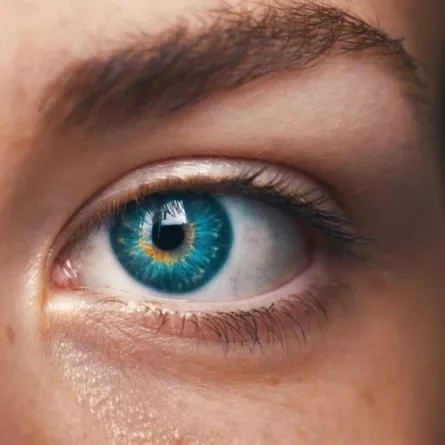
Astigmatism
Astigmatism is caused when the cornea or lens develops into an irregular shape.
The cornea should have a regular curve, a bit like the shape of a football, but for people with astigmatism, the cornea’s curve is more like a rugby ball. This means the cornea can’t focus light rays properly and can cause blurry vision.
There are two types of astigmatism:
- Regular astigmatism is the more common of the two and occurs when the cornea is slightly more curved in one direction than the other.
- Irregular astigmatism is less common and often occurs as the result of an eye injury or a condition which changes the corneal shape such as keratoconus. This type of astigmatism occurs when the cornea is not curved evenly.
The majority of people with astigmatism are born with it, but it can also develop in later life, perhaps as the result of an eye injury or surgical complication.
You have an increased risk of developing astigmatism if you have:
- A family history of astigmatism or other eye conditions such as keratoconus
- A high degree of short-sightedness (myopia)
- A high degree of long-sightedness (hyperopia)
- Had some types of eye surgery, such as cataract surgery
- Scarring or thinning of the cornea, for example if an eye injury has scarred over
Common symptoms of astigmatism include:
- squinting
- blurred or distorted vision
- nausea
- headaches
- eye irritation
- eye strain
- difficulty seeing at night
- fuzzy vision for both short and long distances
Generally, astigmatism will be diagnosed after an eye test. Symptoms vary between individuals so make sure you visit an eye doctor to be sure. An eye doctor will be able to identify if you have astigmatism and provide the steps you can take to correct your vision.
Most people who have astigmatism are born with the eye condition. So it is important for children to have regular eye tests as children are less likely to be able to identify the symptoms themselves, especially at a young age.
To ensure your child’s eye health is in good condition and any potential issues are caught early, children should have regular eye tests once a year. Similarly, adults should have eye tests every 1 – 2 years unless advised otherwise.
Treatment for astigmatism
Astigmatism is treated through refractive laser eye surgery, such as LASIK, or corrective lenses.
Refractive laser eye surgery defines where the uneven curvature is and recovers your vision. Whereas corrective lenses are specially fitted contact lenses that reshape the cornea. But corrective lenses will not permanently improve your vision.
The type of treatment depends on your individual eye health.
In mild cases of astigmatism, treatment may not be necessary. But in more severe cases you could use glasses, contact lenses, or have laser eye surgery to correct your vision permanently.
If you have irregular astigmatism, you won’t be able to correct it with glasses, so if wearing contact lenses isn’t for you, laser eye surgery could be a great option.
At Optegra, we offer LASIK, LASEK, SMILE and lens implant eye surgery methods, all of which can be used to treat patients with astigmatism. Get in touch today or book your consultation, our helpful service team will talk you through all of the different treatments we offer at Optegra.